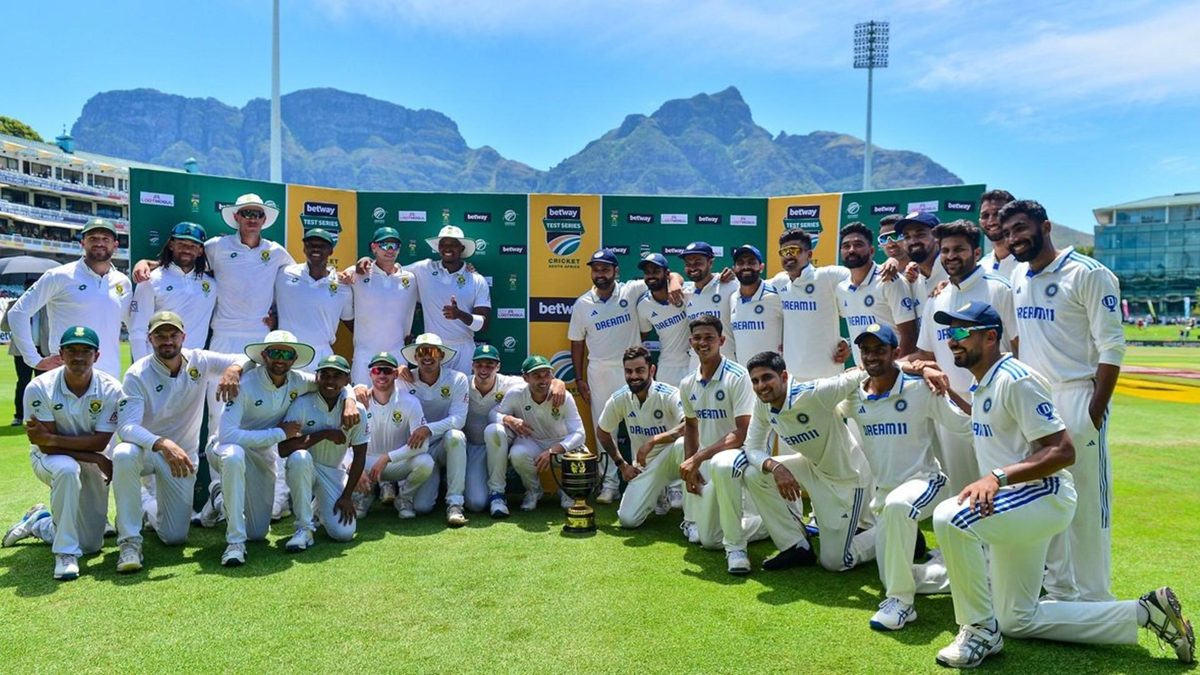
The South Africa-India two-match Test series of 2023/24 ended 1-1, and left behind numerous talking points. Abhishek Mukherjee picks through what we learnt.
Subscribe to the Wisden Cricket YouTube channel for post-match analysis, player interviews, and much more.
He may be 35, but Virat Kohli is still India’s best bet in ‘SENA’
The signs of Kohli finding form were evident at the World Cup, but Test cricket in South Africa poses a different challenge. Here, he assured that he was very close to his prime. At Centurion, his 38 was bettered by only KL Rahul, and his 76 came out of a total of 131. At Newlands, he top-scored with 46.
This was not a one-off. Kohli played two Tests in each of India’s last two tours of South Africa, in 2021/22 and 2023/24. Across these eight matches, he made 333 runs at 41.62, while his teammates in the top six averaged 24.53. Across the four ‘bogey nations’, he averages 43.26. India’s other top-six batters, 28.40.
The post-pandemic slump had been worrying until 2022, but if form is anything to go by, that long-awaited second peak may be imminent.
A look at India’s next-gen pacers
Jasprit Bumrah, 30, and Mohammed Shami, 33, are Indian all-time Test cricket greats. Mohammed Siraj, 29, completed a formidable trio as India phased out Ishant Sharma. Shardul Thakur, 32, used to get the nod ahead of other seamers, but his batting abilities played a role in that.
At 36, Umesh Yadav is older than all of them, and has seldom replicated his amazing home numbers on tour. When India needed backup, they summoned Jaydev Unadkat, now 32, after over a decade. Given their ages and the multi-format demands – Bumrah, Shami, and Siraj are their main ODI bowlers as well – a transition was imminent. So, they picked Mukesh Kumar (one Test cap) and Prasidh Krishna (none) for the South Africa tour.
India had tried Mukesh in the West Indies, but in South Africa, they preferred to start with the younger, taller Prasidh, presumably because ability to use his height to extract steep bounce. Wayward on debut, Prasidh seldom troubled the batters, but his time will come. Picked only at Newlands, Mukesh demonstrated control and skills that defied his lack of experience to pick up four wickets.
In this WTC cycle, India have only Australia left to tour. Their ageing pace trinity may have some backup by then.
South Africa have ominous pace depth
With Anrich Nortje and Lungi Ngidi both injured, the South African pace attack at Centurion Test match bore an inexperienced look despite the presence of the remarkable Kagiso Rabada. Barely two years into his career, Marco Jansen shared the new ball with Rabada. Gerald Coetzee had played only twice before Centurion. Nandre Burger was uncapped.
None of that mattered. Burger struck twice in his first spell to reduce India to 24-3. By the second innings, he had been promoted to opening bowler. Only Coetzee struggled in parts, but it later transpired that he had suffered a pelvic inflammation during the Test match. India made 245 and 131, and with Ngidi back at Newlands, 153.
Nortje will return at some point, but before then, the selectors will be following Duane Olivier (59 Test wickets at 21.93) closely on South Africa’s tour of New Zealand, along with all-rounder Mihlali Mpongwana. Few teams can boast of such pace-bowling depth.
A part-time Test keeper comes at a cost
In the absence of Rishabh Pant and, later, Ishan Kishan, India were left with two choices. They could have picked specialist wicketkeeper KS Bharat and left out one of Shubman Gill, Shreyas Iyer, or KL Rahul. Instead, they left out Bharat, played all three batters, and got Rahul – who had started only one first-class match as keeper – to take up the big gloves.
The team management’s lack of faith in Bharat’s batting abilities led them to opt for the latter. At Centurion, Rahul got a hundred for the ages, but that was not what was being put to test there. While decent behind the stumps, Rahul dropped a simple catch from a dangerous-looking Aiden Markram on 73 on the final day of the series. It eventually did not cost India the match, but on another day, it could have.
Between them, Gill and Iyer managed 115 runs from eight outings to the crease. Replacing one of them with Bharat might have – or not –worked out better for India.
At home, they will not face a similar conundrum, for Ravindra Jadeja, R Ashwin, and Axar Patel all bat, and keeping wicket on turning tracks demand the skills of a specialist honed in domestic cricket. India will almost certainly back a specialist, Bharat or otherwise.
WTC points system will spawn more matches like Newlands
In another era, South Africa might have prepared a flat pitch at Newlands and played an extra batter. That would have brought the draw into the picture and helped them clinch the series, 1-0 if not 2-0.
The World Test Championship rewards four points for a draw, which makes it closer to a defeat (0 points) than to a win (12). Home teams, thus, not only want to win Test series but also clean-sweep them even if that means risking a lost match.
India, too, went in with four specialist fast bowlers, sacrificing Thakur’s batting cushion for Mukesh. Their tail began at eight, which was largely responsible for the unprecedented six-for-nought collapse, but it also meant that there was support after Bumrah and Siraj were done with their opening bursts.
At 642 balls, the Newlands game was the shortest decided Test match of all time. It may be an aberration, but the spurt of sub-1,000-ball Tests in the WTC era – 842 balls at Ahmedabad 2020/21, 866 balls at Brisbane 2022/23, 909 balls at the Kia Oval 2022, 920 balls at Galle 2022, 968 balls at Kolkata 2019/20 – is almost a throwback to the era of uncovered wickets.








